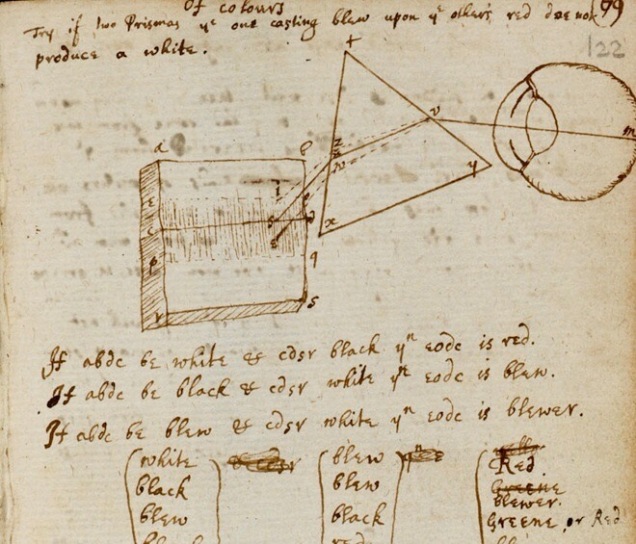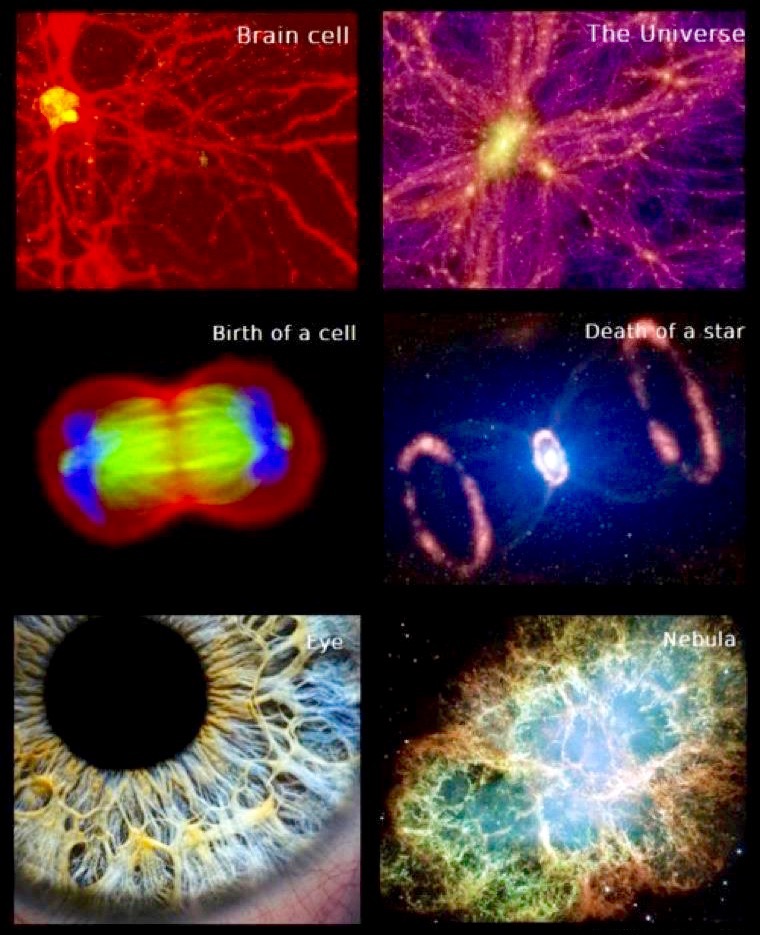
THE LARGEST COLLECTION of Isaac Newton’s papers has gone digital, committing to open-access posterity the works of one of history’s greatest scientist.
Among the works shared online by the Cambridge Digital Library are Newton’s own annotated copy of Principia Mathematica and the ‘Waste Book,’ the notebook in which a young Newton worked out the principles of calculus.
Other of his myriad accomplishments include the laws of gravity and motion, a theory of light — pictured above are notes on optics — and his construction of the first reflecting telescope.
Newton was also notoriously idiosyncratic and irascible, obsessed with the occult and vicious towards scientific rivals; a full account of his life and science can be found in James Gleick’s Isaac Newton, and a partial but entertaining fictionalization in Neal Stephenson’s Baroque Cycle. But the papers come straight from the master.
“Anyone, wherever they are, can see at the click of a mouse how Newton worked and how he went about developing his theories and experiments,” said Grant Young, the library’s digitization manager, in a press release. “Before today, anyone who wanted to see these things had to come to Cambridge. Now we’re bringing Cambridge University Library to the world.”
Approximately 4,000 pages of material are available now, and thousands more will be uploaded in coming months. On the following pages is a sampling of the the library.
Artwork
In Need of GPS
Warrented Queen
Spontaneous Photon Emission from Human Body
Imaging of Ultraweak Spontaneous Photon Emission from Human Body Displaying Diurnal Rhythm
The human body literally glimmers. The intensity of the light emitted by the body is 1000 times lower than the sensitivity of our naked eyes. Ultraweak photon emission is known as the energy released as light through the changes in energy metabolism. We successfully imaged the diurnal change of this ultraweak photon emission with an improved highly sensitive imaging system using cryogenic charge-coupled device (CCD) camera. We found that the human body directly and rhythmically emits light. The diurnal changes in photon emission might be linked to changes in energy metabolism.
“Human body is glimmering with light of intensity weaker than 1/1000 times the sensitivity of naked eyes.
The photon emission mechanism is thought to originate from the generation of free radicals in energy metabolic processes. The spectra of photon emission detected from the palm skin span from 500 to 700 nm, with primary and secondary emission peaks at 630–670 nm and 520–580 nm, respectively.
Free radicals subsequently react with lipid or protein, generating electronically excited species as byproducts.
These excited molecules, such as carbonyl group in excited triplet state from lipid peroxidation or proteins including excited tyrosine or tryptophan, can further react with fluorophores through energy transfer and lead to photon emission.
Recent advances of chronobiology have revealed that the redox state of the cells regulates circadian gene expression, indicating the importance of metabolic cues for clock oscillations.
Indeed, glucose utilization, accompanied by oxygen consumption, shows robust rhythms in the main mammalian circadian center.
By the regulation of cellular respiratory chain producing reactive oxygen species, which in turns react with molecules including proteins, lipids and fluorophores, whose excited states emit biophotons, the human body glitters to the rhythm of the circadian clock.”
“Today, our computers are far more advanced, and yet at the core, the electrical information we are passing through computers today is still a form of light. Now our sciences are revealing humans work the same way, and Light carries information through our brain, nervous system, and even our DNA.
If that wasn’t cool enough already, scientists have also discovered that not only do we emit light, we have the ability to effect it with our thoughts alone. In a recent study, participants were placed in a darkened room and asked to visualize a bright light. When they did this, they were able to increase their levels of biophoton emissions significantly, showing that our intentions have an influence on light itself!”
An introduction to human biophoton emission.
Biophoton emission. New evidence for coherence and DNA as source.

Find What You Love
Rumi
Arrival of the Birds
Arrival of the Birds and Transformation
Are You Insane?
” So should we believe that creative genius is connected with madness or not? Modern empirical research suggests that we should because it has pinpointed the connection between madness and creativity clearly. The most important process underlying strokes of creative genius is cognitive disinhibition—the tendency to pay attention to things that normally should be ignored or filtered out by attention because they appear irrelevant.
When Alexander Fleming noticed that a blue mold was killing off the bacteria culture in his petri dish, he could have just tossed the latter into the autoclave like any of his colleagues might have done. Instead, Fleming won the Nobel Prize for his discovery of penicillin, the antibacterial agent derived from the mold Penicillium notatum. Many people have gone for a walk in the woods and returned with annoying burrs attached to their clothing, but only George de Mestral decided to investigate further with a microscope, and thereby discover the basis for Velcro.
But cognitive disinhibition has a dark side: It is positively associated with psychopathology. For example, schizophrenics find themselves bombarded with hallucinations and delusions that they would be much better off filtering out. So why don’t the two groups become the same group? According to Harvard University psychologist Shelly Carson, the creative geniuses enjoy the asset of superior general intelligence. This intelligence introduces the necessary cognitive control that enables the person to separate the wheat from the chaff. Bizarre fantasies are divorced from realistic possibilities.
According to this conception, high intelligence is essential to creative genius, but only insofar as it collaborates with cognitive disinhibition. Exceptional intelligence alone yields useful but unoriginal and unsurprising ideas. Marilyn vos Savant made it into the Guinness Book of Records for the world’s highest recorded IQ, and yet has not managed to find a cure for cancer or even build a better mousetrap.
Some domains of creativity put far more emphasis on usefulness than on originality and surprise. In such cases, the vulnerability shared between genius and madness becomes much less critical. For example, psychopathology can be negatively correlated with creative genius in the hard sciences. The interesting exception are the scientific revolutionaries who go against the prevailing paradigms. For them, the relation is almost as positive as found for artists and writers.”
The Connection Between Genius and Crazy

Soar
Mirror Neurons and How We Connect
Have you ever wondered what connects us to each other? What the Vagus Nerve, your beating heart (cardiovascular system), digestive tract (Enteric Nervous System), and to some extent, believe it or not, the brain and respiratory system. Everything connects; your body is a complex and organized system.
Mirror neurons are one of the most important recent discoveries in neuroscience. They are a variety of visuospatial neurons which indicate fundamentally about human social interaction. Or, respond to actions that we see in others and fire in that same way when we recreate that action ourselves. They have been linked to other human behaviors and thought processes, and defects in them linked to disorders such as autism.
…
…





















You must be logged in to post a comment.